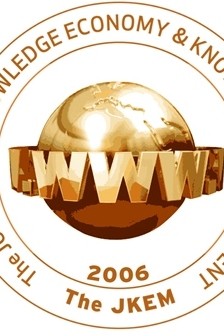THE INFLUENCE OF MULTIPLE INTELLIGENCE ON CAREER ORIENTATION: THE VALIDATION OF HAMBA MULTIPLE INTELLIGENCE SCALE
students
THE INFLUENCE OF MULTIPLE INTELLIGENCE ON CAREER ORIENTATION: THE VALIDATION OF HAMBA MULTIPLE INTELLIGENCE SCALE
Multiple Intelligence, HAMBA MI Scale, career orientation students,
___
- Côté, S., & Miners, C. T. H. (2006). Emotional intelligence, cognitive intelligence, and job performance. Administrative Science Quarterly, 51(1), 1-28.
- De Long, T. J. (1982). Reexamining the career anchor model. Personnel, 59(3), 50-61.
- Demiel, E.T, Dusukcan, M. & Olmez, M. (2012). The impact of areas of multiple intelligence on entrepreneurial behavior. African Journal of Business Management, 6(1), 415-421.
- Gardner, H. (1983 / 1993). Frames of mind: The theory of multiple intelligences. New York: Basic Books.
- Gardner, H. (1993). Multiple intelligences: The theory in practice. New York: Basic Books.
- Gardner, H. (1999). Intelligence reframed: Multiple intelligences for the 21st century. New York: Basic Books.
- Hair, J. F. J., Black, W. C., Babin, B. J., Anderson, R., E., & Tatham, R. L. (2006). Multivariate data analysis (6th ed.). New Jersey, NJ: Pearson Education, Inc.
- Hoffman, B.J. & Frost, B.C. (2006). Multiple intelligences of transformational leaders: An empirical examination. International Journal of Manpower, 27(1), 37-51.
- Nunnally, J. C. (1978). Psychometric theory. New York: McGraw-Hill.
- Rapisarda, B. A. (2002). The impact of emotional intelligence on team cohesiveness and performance. The International Journal of Organizational Analysis, 10(4), 363-379.
- Schein, E. (1978). Career dynamics: Matching individual needs and organizational needs. Massachusetts, MA: Addison-Wesley.
- Schein, E. (1987). Individuals and careers. In Lorsch, J. (Ed.), Handbook of Organizational Behavior. Englewood Cliffs, NJ: Prentice Hall.
- Schein, E. (1990). Career anchors: Discovering your real values. San Diego, CA: Pfeiffer & Company.
- Sekaran, U., & Bougie, R. (2010). Research methods for business. 5th ed. United Kingdom: John Wiley & Sons Ltd.
- Sternberg, R. J. (1985). Beyond IQ: A Triarchic Theory of Intelligence. Cambridge: Cambridge University Press.
- Sy, T., Tram, S., & O' Hara, L. A. (2006). Relation of employee and manager emotional intelligence to job satisfaction and performance. Journal of Vocational Behavior, 68(3), 461-473
- Tabachnick, B. G., & Fidell, L. S. (2001). Using multivariate statistics. Boston: Allyn and Bacon.
- Thorndike, E. L. (1920). Intelligence and its uses. Harper's Magazine, 140, 227-235.
- Yang, K-P. & Mao, X-Y. (2007). A study of nurses’ spiritual intelligence: A cross-sectional questionnaire survey. International Journal of Nursing Studies, 44, 999–1010.
- Youndt, M. A., Snell, S. A., Dean, J. W. J., & Lepak, D. P. (1996). Human resource management, manufacturing strategy, and firm performance. Academy of Management Journal, 39(4), 836-866.
- Yayın Aralığı: Yılda 2 Sayı
- Başlangıç: 2006
- Yayıncı: İbrahim Güran YUMUŞAK
A. Kadir Bin Othman – M. Khirzan Badzli RAHMAN, Abdul Kadir bin Othman, Ariff Md Abdul MALİK, Mohd Khirzan Badzli Abdul Rahman, Samsudin WAHAB
THE ROLE OF ACCULTURIZATION FOR CROSS-CULTURAL HUMAN RESOURCE DEVELOPMENT
Vilmante Kumpikaite – Kestutis DUOBA, Kestutis Duoba
Pedro FERREİRA, Elizabeth Real De OLİVEİRA
GÜNEY KORE’NİN İNOVASYON AKTÖRLERİ: ÜNİVERSİTE, SANAYİ VE KAMU ARAŞTIRMA MERKEZLERİNİN ANALİZİ
THE RELATIONSHIP BETWEEN KNOWLEDGE SHARING AND NEGATIVE ATTITUDE AGAINST EMPLOYEE MONITORING
Cihan Tınaztepe – Funda Özer– Mehmet Kız YOZGAT, Cihan Tinaztepe, Funda Özer, Mehmet Kiziloğlu, Uğur Yozgat
- CHENG, Ping SHİH, - LİNG, - I, - HSU
Hamza Ateş– Bora Yıldız– Harun YILDIZ, Hamza Ateş, Bora Yıldız, Harun Yıldız
Derya Ergün Özler – Nuray Mercan – Yaşar ALTINAY, Derya Ergün Özler, Nuray Mercan, Yaşar Aksanyar, Ayşenur Altınay
THE COMPARISON OF TWO STRATEGIC ALLIANCES IN TERMS OF ORGANIZATIONAL LEARNING AND KNOWLEDGE TRANSFER
